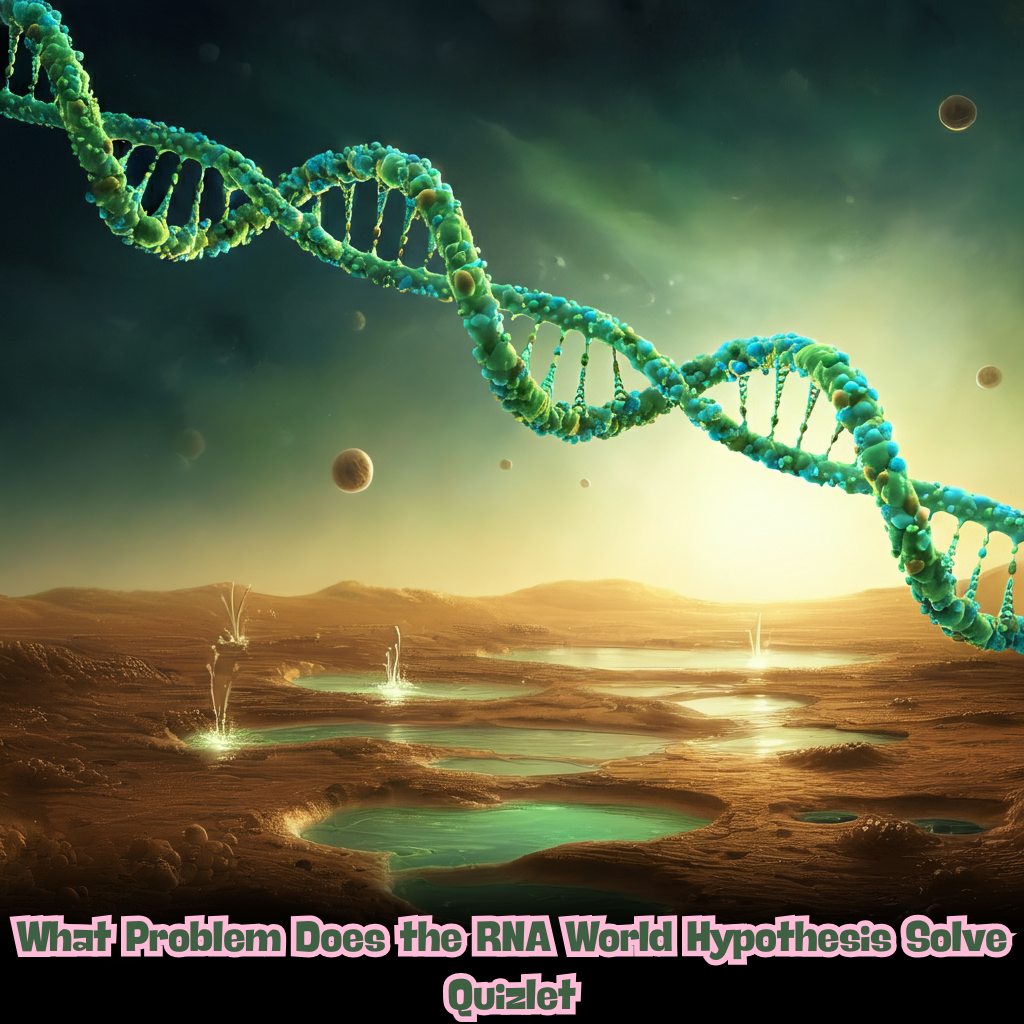The mystery of how life began on Earth has long been a question that fascinates scientists and thinkers alike. One of biology’s most perplexing challenges is unraveling its origins an enigma wrapped in a “chicken-and-egg” dilemma. Which came first, the DNA required to build proteins or the proteins needed to replicate DNA? This conundrum led to the proposal of the RNA world hypothesis, a revolutionary idea offering a glimpse into how life may have first emerged from organic molecules.
Whether you’re a biology enthusiast, a student preparing for exams, or simply someone curious about the origins of life, exploring the RNA world hypothesis provides a captivating understanding of this scientific puzzle.
The Origin Problem: The Chicken-and-Egg Paradox
To understand the problem the RNA world hypothesis aims to solve, it’s crucial to grasp the symbiotic relationship between DNA and proteins in living organisms. DNA serves as the genetic blueprint, storing instructions for cellular processes. Proteins, on the other hand, are the catalysts that carry out these processes, including DNA replication. This interdependence presents a problem DNA relies on proteins for its replication and functionality, while proteins need DNA to encode their own construction.
If life is dependent on this intricate partnership, the question becomes inevitable how could life have originated when one cannot exist without the other? This paradox created a significant obstacle in understanding life’s emergence until the RNA world hypothesis emerged as a plausible solution.
Enter The RNA World Hypothesis
The RNA world hypothesis proposes a fascinating idea. It suggests that early life may not have been reliant on the duo of DNA and proteins but was instead built around a single, remarkable molecule RNA. This hypothesis gained ground because RNA is unique; it possesses the dual capability to act both as a carrier of genetic information and as a catalyst for biochemical reactions.
This duality meant that RNA alone could have served as the foundational molecule for primitive life forms, effectively sidestepping the need for separate DNA and proteins in the earliest stages of life. Unlike today, where life depends on the three roles played by DNA, RNA, and proteins, the RNA-dominated world could have functioned as a simpler, singular system.
Solving the Paradox Through RNA
One of the most compelling features of the RNA world hypothesis is how elegantly it addresses the issue of which came first—DNA or proteins.
First, RNA shows the ability to self-replicate without needing proteins. Various studies have demonstrated that certain RNA molecules, also known as ribozymes, can act as catalysts and replicate themselves or other RNA strands. This means early systems might not have relied on enzymatic proteins. Instead, self-replicating RNA could have driven the creation and duplication of genetic material.
Second, RNA’s dual role eliminates the need for separate systems for storing genetic information and catalyzing reactions. Unlike DNA, which solely acts as a genetic repository, RNA itself can perform dual-duty. This makes it a practical precursor, with early organisms relying on RNA until more stable systems like DNA and proteins evolved over time.
Finally, RNA serves as an evolutionary bridge. Imagine this timeline of development—initially, RNA molecules dominated, capable of self-replication and facilitating reactions. Over countless generations, RNA enabled the synthesis of proteins, which proved to be more efficient as catalysts. Eventually, DNA arose as a more stable medium for genetic information, replacing unstable RNA. This progression elegantly explains how the current DNA-RNA-protein system may have evolved.
Evidence Supporting The Hypothesis
Over the years, scientists have uncovered many pieces of evidence that bolster the RNA world hypothesis. One of the most fascinating discoveries has been the existence of ribozymes, or RNA molecules that perform catalytic functions. A well-known example is the ribosome, the molecular machine essential for protein synthesis. Interestingly, at the heart of the ribosome’s function lies RNA, highlighting its ancient role in catalysis.
Another compelling line of evidence comes from laboratory experiments focused on in vitro evolution. These experiments show that RNA molecules, when subjected to selective pressures, can evolve and develop enhanced catalytic properties. This experimentally demonstrates RNA’s versatility and potential to kickstart biochemical reactions.
Additionally, RNA still performs significant roles in modern biochemical pathways, particularly those fundamental to life processes. Messenger RNA (mRNA), transfer RNA (tRNA), and ribosomal RNA (rRNA) all hint at a time when RNA may have been the dominant molecule in cells. Such evidence reinforces the hypothesis that RNA preceded DNA and proteins in the molecular hierarchy.
Challenges and Critiques
While the RNA world hypothesis solves many problems, it’s not without its critics or unresolved questions. One major concern is the relative instability of RNA compared to DNA. RNA is chemically reactive and prone to degradation, which could have made survival difficult for RNA-based life in the harsh conditions of early Earth.
Another question revolves around how prebiotic Earth may have generated complex RNA molecules. Could the chemistry of the time have synthesized RNA in sufficient concentrations without human intervention? While researchers have made strides in forming simple RNA precursors under laboratory conditions, the complete pathway from raw materials to complex RNA molecules remains uncertain.
Despite these challenges, the RNA world hypothesis remains one of the most influential and robust ideas in the study of life’s origins. It has inspired ongoing research into not only how life began but also exciting new areas in biotechnology and synthetic biology.
Conclusion
The RNA world hypothesis solves one of life’s oldest riddles by presenting a plausible solution to the DNA-protein interdependence problem. By proposing that RNA once acted as both the genetic repository and catalytic workhorse, it eliminates the need for separate systems in early life and provides a coherent evolutionary narrative.
Whether you’re using Quizlet to ace an upcoming biology exam or simply pondering the mysteries of existence, the RNA world hypothesis offers a profound and elegant explanation. It shows us that even the grandest systems, like life itself, can arise from something as simple and multifunctional as a single molecule.
Understanding the origins of life not only connects us to our biological past but also fuels curiosity for what’s yet to be discovered. The RNA world hypothesis is an invitation to look deeper into the extraordinary ingenuity of nature, reminding us that answers to great mysteries often lie in the most unexpected places.



